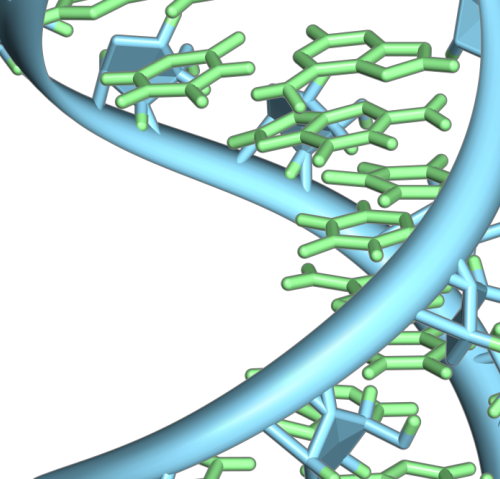October 2, 2024 by University of Chicago Inside every cell, inside every nucleus, your continued existence depends on an incredibly complicated dance. Proteins are constantly wrapping and unwrapping DNA, and even minor missteps can lead to cancer. A new study from the University of Chicago reveals a previously unknown part of this dance—one with significant...
Tag: <span>RNA</span>
Beyond CRISPR: seekRNA delivers a new pathway for accurate gene editing
SCIENCE & TECHNOLOGY NEWS Patented method developed in the laboratory of Dr Sandro Ataide promises to accelerate the potential of genetic engineering already shown by CRISPR gene-editing technology. DNA – illustrative photo. Image credit: Pixabay (Free Pixabay license) SeekRNA a ‘real game-changer’Scientists at the University of Sydney have developed a gene-editing tool with greater accuracy...
Researchers are using RNA in a new approach to fight HIV
You know mRNA, now meet siRNAPeer-Reviewed Publication UNIVERSITY OF WATERLOO Society learned about the value of mRNA during the COVID-19 pandemic when we saw scientists and medical professionals harness its power to deliver a vaccine for the virus within a year. Now, University of Waterloo pharmacy associate professor Emmanuel Ho has developed a novel nanomedicine...
Ascidian’s lab in Boston is developing a new kind of RNA editing therapy
First-ever RNA editing trial in US gets clearance, pitting ‘exon editing’ technology against vision lossRyan CrossSenior Science CorrespondentThe FDA told the Boston startup Ascidian Therapeutics that it can begin the first clinical tests of a therapy that “rewrites” RNA to correct roughly two-thirds of the genetic typos responsible for an inherited form of vision loss...
New study discovers short, toxic RNAs kill brain cells and may allow Alzheimer’s to develop
by Northwestern University A hairpin loop from a pre-mRNA. Highlighted are the nucleobases (green) and the ribose-phosphate backbone (blue). Note that this is a single strand of RNA that folds back upon itself. Credit: Vossman/ WikipediaAlzheimer’s disease, which is expected to have affected about 6.7 million patients in the U.S. in 2023, results in a substantial...
Nanoparticle-Delivered RNA Reduces Neuroinflammation in Lab Tests
MIT researchers find that in mice and human cell cultures, lipid nanoparticles can deliver a potential therapy for inflammation in the brain, a prominent symptom in Alzheimer’s.Some Covid-19 vaccines safely and effectively used lipid nanoparticles (LNPs) to deliver messenger RNA to cells. A new MIT study shows that different nanoparticles could be used for a...
New model links RNA editing glitch to early-stage type 1 diabetes
Hebrew University of Jerusalem Hebrew University study proposes a new model suggesting that disrupted RNA editing within pancreatic beta cells might initiate an inflammatory response akin to early-stage type 1 diabetes. This new perspective challenges the long-held belief of viral involvement, offering potential implications for treatments and cures. A recent study by researchers at the...
Study Looks at RNA’s Solo Act on the Ever-Changing Stage of Cellular Dynamics
RNA has been in the limelight for its starring role in cutting-edge vaccine technology, but RNA molecules are also key players in the inner workings of cells. Researchers have found that RNA molecules can undergo phase separation in a temperature-dependent manner, and this phase behavior is supported by magnesium ions in solution. Here, CAG-repeat RNA...
Baldness breakthrough? New RNA treatment may stimulate hair growth
Scientists may have made a breakthrough in the treatment of baldness by using a tiny RNA particle to stimulate hair growth. The study revealed that hair follicles become stiff with age, making it harder for hair to grow. However, by softening the stem cells through the production of a specific RNA called miR-205, researchers at Northwestern University...
Nature-inspired compounds chop up cancer gene’s RNA
Resarchers have found new possibilities for targeting cancer genes’ RNA with nature-inspired compounds. The cancer gene MYC drives the unrestrained growth of most human cancers. It has been called the “Mount Everest” of oncological research because of the difficulty of designing medications that can disable it, and the expectation that an effective MYC drug could help so...



